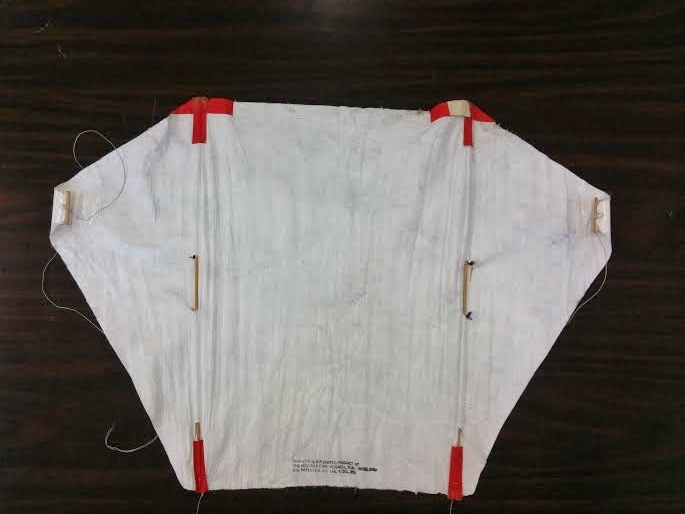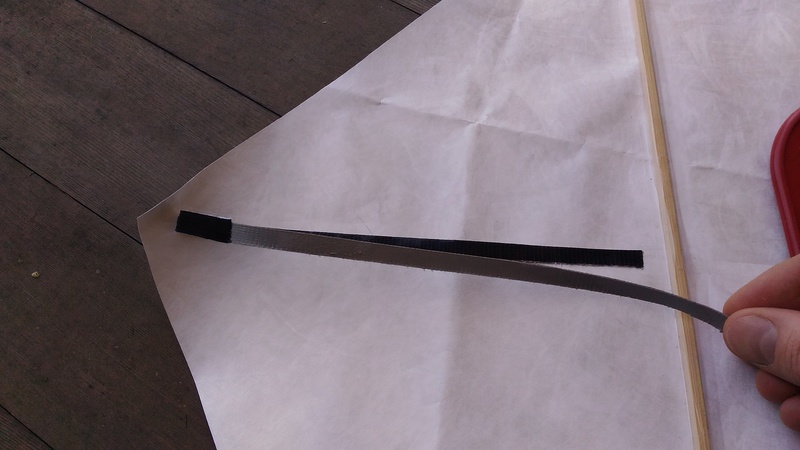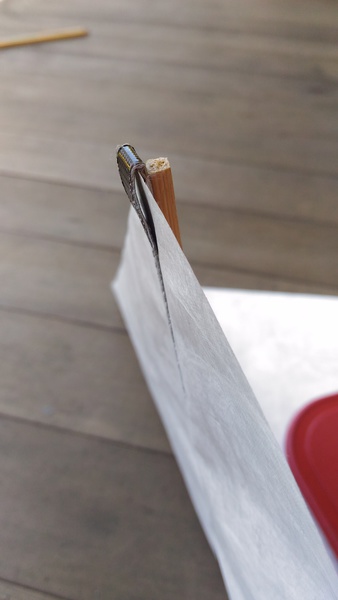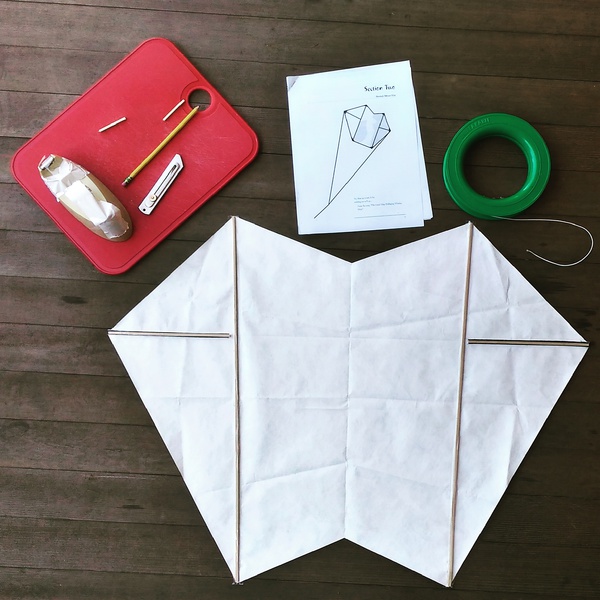Stormy O Weathers Horned Allison: towards a kite wind speed meter
see current posts about kite anemometers on headfullofair.com
Over the past three years @Ecta64 and I have posted a few notes investigating using a kite itself as a wind speed meter.. Recently @Ecta64 has collected a series of parts that replicate the functionality of a commercial wind prospecting device from the ‘80’s, the Approach Fish TALA, or Tethered Aerodynamic Lifting Anemometer (i.e. a kite wind speed meter). You can see @Ecta64’s overview on his Youtube channel.
The TALA’s kite is fairly easy to build, but it has a really long tail that is a pain to launch:

@Ecta64 has identified very similar sled kite with more stability, no tail, and an even easier build: the Horned Allison kite designed during the ‘90’s by Stormy O. Weathers..
My attempt and results
I wanted to make some notes on Stormy’s kite design so I could properly replicate it in the future. I did this by making a version with materials at hand, rather than exactly replicating Stormy’s procedure. It gave me a better sense for his design and construction choices, and I hope to do a more faithful replication in the future.
Starting from Stormy’s instructions in Section 2 of his book. Several construction details are only in the text.
Materials:
- Split bamboo (1/8” diameter) (Stormy suggests drinking straws)
- Type 10 tyvek ( type 1025D, 1.25 oz/yard) (Stormy suggests a thin HDPE trash bag)
- crystal tape (stormy recommends 1” masking tape, but crystal tape sticks better to tyvek)
-
Gorilla tape*
- *Stormy suggests putting a strip of non-fiber strapping tape wrapped around the keel on both sides. This is a specialty tape. You can find it by looking for ‘tensilized’ or ‘linearized’ Polypropylene strapping tape, like Tesa 4288 from uline. I found my roll of PP strapping tape after building the kite and substituted gorilla tape in construction.
My material choices, especially the gorilla tape and spars, were much heavier than Stormy’s, and my kite didn’t have as low a wind range. I will probably build with tyvek again, however, because I don’t have to hem the tyvek kite like I do a trash bag, saving a major construction step.
Keel & Bridle Attachment:
Stormy’s directions were only text here, and @Ecta64 and I did it two different ways, and I’m not sure I’m right in this construction. Stormy recommends a piece of straw that is either: 1)a tie point to prevent the tape from being sticky or 2) a re-enforcement spar for the keels.
Stormy’s directions:
Peel off a 12” long by 1/4” wide strip of strapping tape from the roll. Lay a piece of soda straw straight across the middle of the strapping tape, stick it firmly to the tape, and trim the straw to where it just reaches across the tape.
- Hold one end of the tape in one hand while you position that section of soda straw outside of, but barely touching, the bridle point. Now rub the tape down along that horizontal line across the kite between the bridle points. Turn the keel over, and put the other half of the tape on the back side of the keel.
My pictures:
Here’s the strapping tape on one side. The small piece of tape that makes a ‘non-sticky’ point to tie MIGHT be where Stormy recommends putting a straw:
[
[
In any case, I ALSO added a re-enforcing spar. @Ecta’s flight reports suggest this was unnecessary:

Questions and next steps
The kite flew great! a little too heavy. Next time I’ll build it with straws and strapping tape, and perhaps try the plastic bag construction too.
comments:
Great post! Even after multiple re-reads I still can’t entirely figure out Stormy’s bridle attachment but I think you are very close to it (if not exact). I have flown mine with the keel spars retrofitted on and I do think it does fly a bit better in that cross winds don’t “push in” the keel as much. Its a subtle difference though. BTW how deep was the trailing edge “V” on your kite? I didn’t see Stormy put any exact specs on that so I’m possibly wondering if I cut mine too shallow. Maybe a deeper V provides better stability and less “hunting”. Here’s a article (linked below) I found from a old magazine on sled designs with scallops and trailing edge tension lines (which seem to do the same job as the canted spars on the Stormy kite). Thanks for posting the pics of the bridle….Imagining that in one’s mind eye was a bit hard, I wish Stormy had illustrated it. If you use a garbage bag I do recommend the .9 mil since its not too thick but not hard to cut. The hemming is a bit of a pain but not too bad as I have found I can easily do large lengths >6 inches per piece if I’m careful (I typically lay out the bag on a glass table and the plastic just sticks to it and I get the plastic smooth before hemming with the tape).
Sled_4_All_Seasons.pdf
Archived 4th of March 2018 from Publiclab.org.
